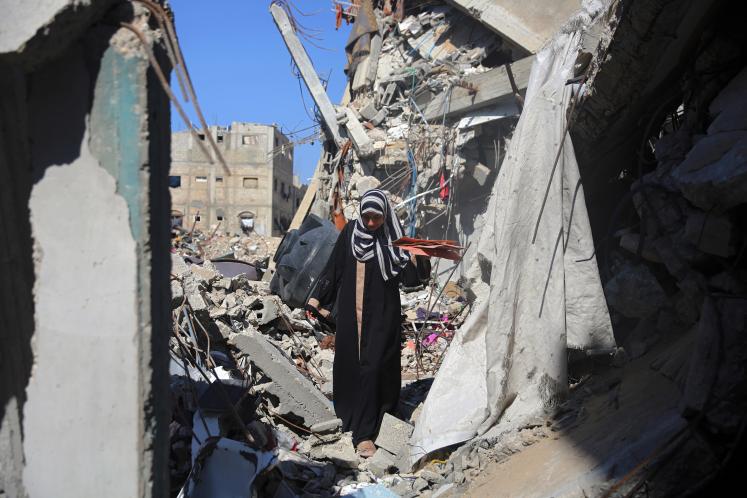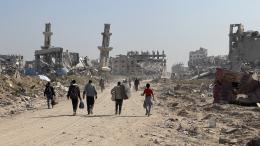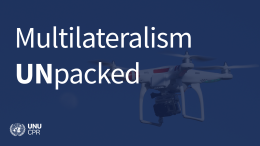This blog was originally published by World Politics Review.
This week, U.S. President Donald Trump unveiled a sweeping 20-point plan to end the war in Gaza. The plan goes far beyond previous U.S. proposals, laying out security arrangements for Gaza, a reconstruction roadmap and steps toward normalization of diplomatic relations across the Middle East. Along with many European and Middle East governments, U.N. Secretary-General Antonio Guterres has welcomed the initiative. It is nonetheless controversial: critics see it as an unbalanced, U.S.-driven framework that risks alienating key actors in Israel, while failing to deliver concretely on the key promise of statehood to the Palestinians. It remains to be seen if the proposal will be accepted.
But whatever one thinks of the details, a key message of the 20-point plan is that a long-term solution for Gaza will only succeed if it is anchored in a broader regional framework. Without that underpinning, each point in the plan risks becoming a stand-alone gesture, easily blocked, ignored or undone by the next round of violence. If Gaza is to have a different future and be part of a broader stabilization of the region, it needs support structures far stronger than bilateral deals or ad hoc arrangements.
This is where the United Nations can play a meaningful role, by offering a regional plan to bolster, balance and monitor any new peace deal for Gaza.
At first glance, the U.N. may not seem like an obvious partner for any new Middle East peace initiative. Over the past several years, its presence across the region has shrunk. The office of the U.N. special coordinator for the Middle East has been vacant for months. Peace operations in Lebanon and Iraq are winding down. U.N. humanitarian operations in Gaza—once the backbone of international relief efforts in the enclave—have largely been replaced by private actors. The perception is of an institution in retreat, at precisely the moment when other actors are moving forward with big initiatives.
But the U.N. has unique capacities that make it indispensable. For decades, it has done the quiet, painstaking work that no other actor can: brokering ceasefires, removing weapons of mass destruction, organizing elections, maintaining channels of communication between sworn enemies and delivering humanitarian lifelines in the middle of warzones. Its impartiality may frustrate Washington, as well as capitals in Europe and the region, but it is exactly that quality that allows the U.N. to function where others cannot.
Trump’s plan for Gaza is a political initiative. Its proposed transitional authority and international stabilization force may well require some form of authorization by the U.N. Security Council. To be sustained as a lasting peace plan for Israel and Palestine, it should draw on the kind of impartial mechanisms of service delivery, sustained diplomacy and credible monitoring that only the U.N. can provide.
The core strength of the 20-point plan is that it treats Gaza not in isolation, but as part of a wider regional challenge. This reflects reality. Conflicts in Gaza, Lebanon, Syria, Yemen and the Gulf are increasingly entangled. Trying to solve Gaza without addressing these wider linkages will never work.
A lasting peace plan should draw on the kind of impartial mechanisms of service delivery, sustained diplomacy and credible monitoring that only the U.N. can provide.
The U.N. is uniquely positioned to provide the regional framework that can shore up the 20-point plan. A useful model lies in the Helsinki process of the 1970s, which helped lower Cold War tensions between East and West by embedding immediate security concerns within a long-term framework of cooperation. A Helsinki-style process for the Middle East has been discussed for years, and was even floated by Guterres early in his first term as secretary-general, but it was never taken up.
Trump’s plan provides an opening to revive this idea of a Helsinki-like process, and it would not be starting from scratch. The 2020 launch of the Abraham Accords—which saw Israel normalize relations with the United Arab Emirates and Bahrain, among other countries—already provided a starting point for a regional diplomatic architecture.
More recently, in reaction to Israel’s bombing of Hamas representatives in Qatar, an emergency conference of Arab and Islamic leaders evoked a “Shared Vision of Security and Cooperation in the Region” and called for implementation mechanisms to be set in place. Linking the 20-point plan to these initiatives could address some of the criticisms that it is too American, while also building a regional support structure for ending the Gaza conflict.
There are three concrete ways the U.N. could act now as the parties consider the 20-point plan:
Appoint a regional envoy. Several points of the U.S. plan hinge on political dialogue: negotiating demilitarization in Gaza, ensuring Palestinian governance reform and coordinating normalization measures with Arab states. None of these will move forward without a trusted convener. Guterres could appoint a single, high-level envoy with a regional mandate—a kind of “super envoy”—to keep the pieces connected. This envoy would not need to be explicitly included within the 20-point plan, but would give the political process diplomatic traction by linking it to other initiatives and actors. By doing so, the U.N. would turn proposals on paper into a structured conversation with a chance of durability.
Provide a framework for dialogue. The U.S. plan calls for regional buy-in, but it lacks a mechanism for states with conflicting interests to engage constructively. Here, the U.N. could help convene a dialogue process modeled on Helsinki, embedding short-term steps like reconstruction pledges, arms control measures and prisoner exchanges within a broader framework of regional coexistence. This would bolster provisions of the plan that rely on long-term regional cooperation, including commitments to security coordination and economic integration. Without such a forum, these elements risk remaining aspirational. With U.N. and regional backing, they could be fleshed out as a process and pegged to a timetable.
Support credible security guarantees. Some of the plan’s most sensitive points on border security, demilitarized zones and postwar monitoring in Gaza will only work if credible, impartial guarantees are in place. The U.N. has long experience providing this kind of monitoring, from southern Lebanon to Yemen. If the U.N. quietly prepares rules of engagement, logistics and troop contributions now, it could underpin the plan’s security provisions when the time comes. In this way, the U.N. contributions could give teeth to proposals that might otherwise collapse under mutual suspicion.
Some will argue that the U.N. is too divided, too underfunded and too politically constrained to take on these roles. That is indeed a risk. But the bigger risk is absenteeism. If the U.N. remains on the sidelines while others build frameworks for the region, it will not only condemn the U.N. to irrelevance, but more importantly, the Middle East will lose one of the few actors able to provide impartiality.
Trump’s 20-point plan may or may not succeed on its own merits. But it has already done something important: shifted the debate over Gaza away from narrow crisis management toward the idea of a region-wide solution. That is the conversation the Middle East urgently needs, and the U.N. should take every opportunity to help convene it, in order to not only end the war in Gaza but also offer a regional structure and process at this critical moment. In doing so, the organization can help build toward the kind of coherence and credibility that will determine whether a lasting peace can finally be achieved for Israel, Palestine and the region as a whole.





